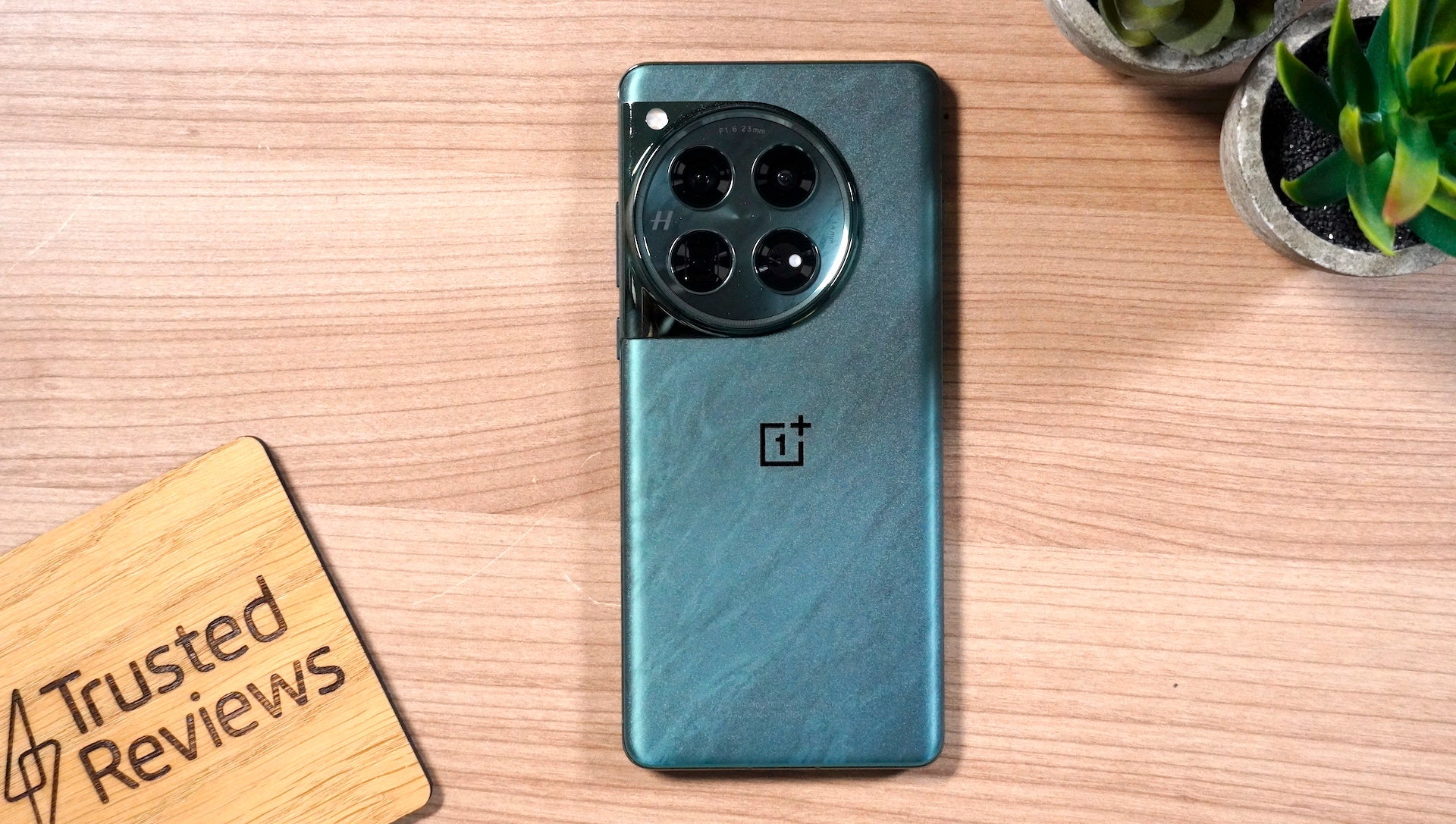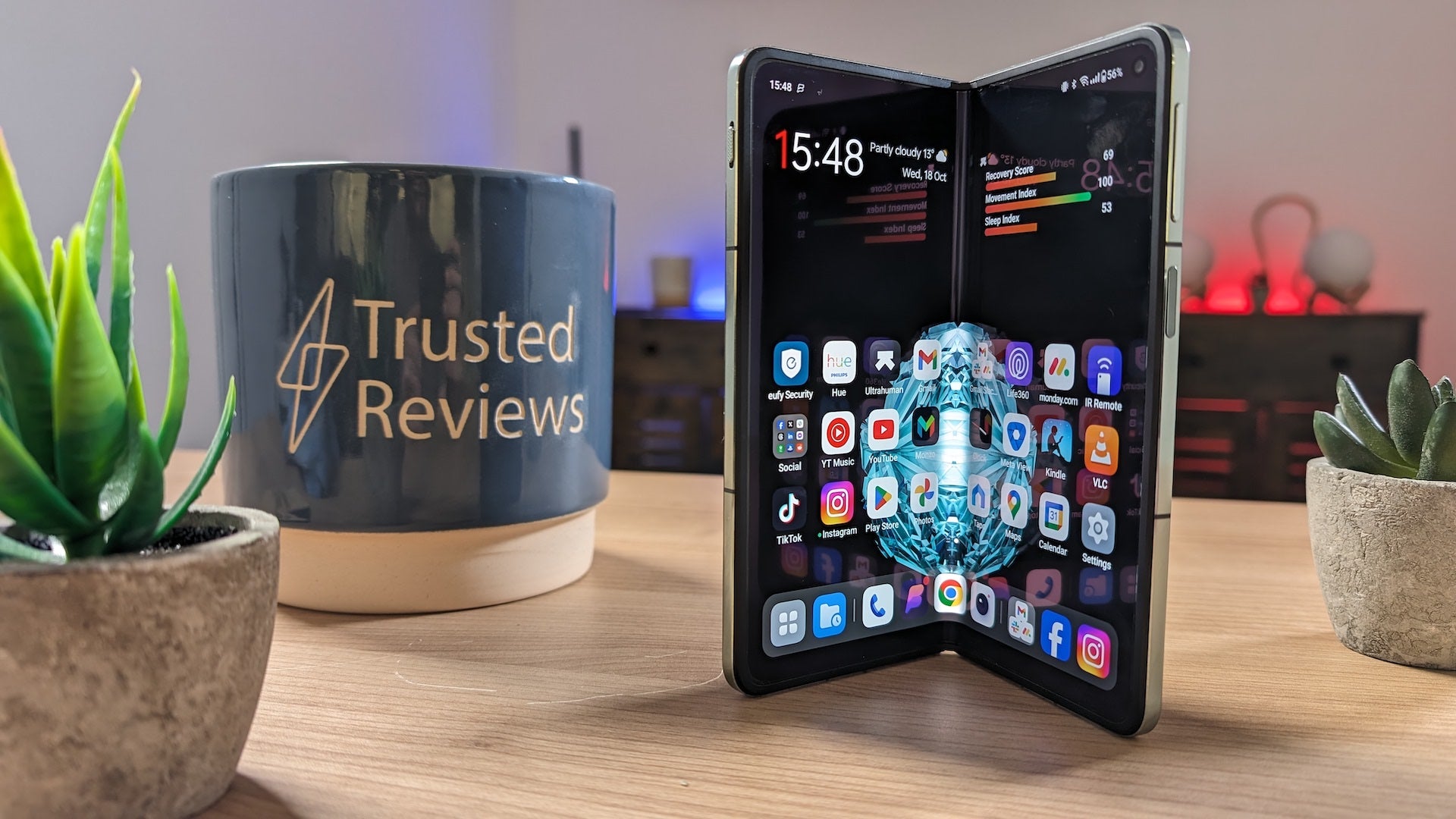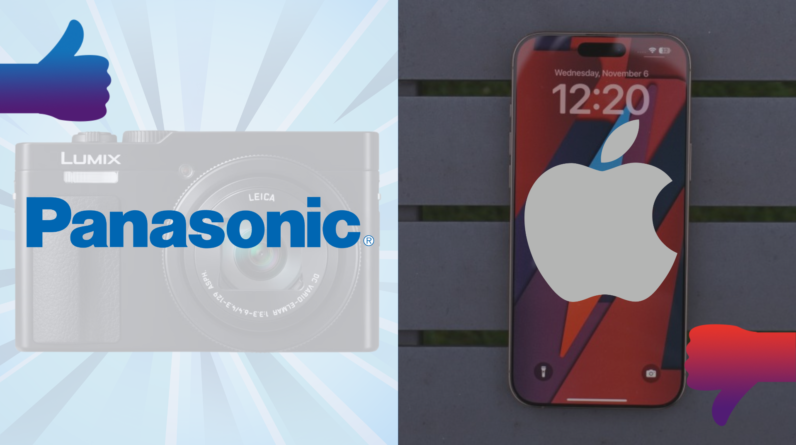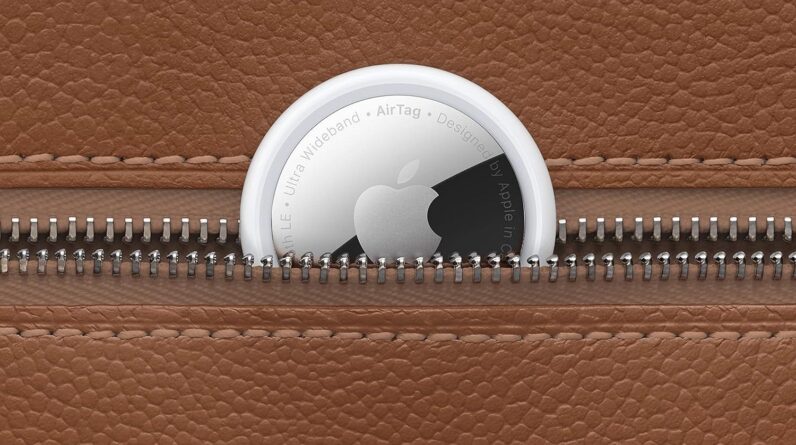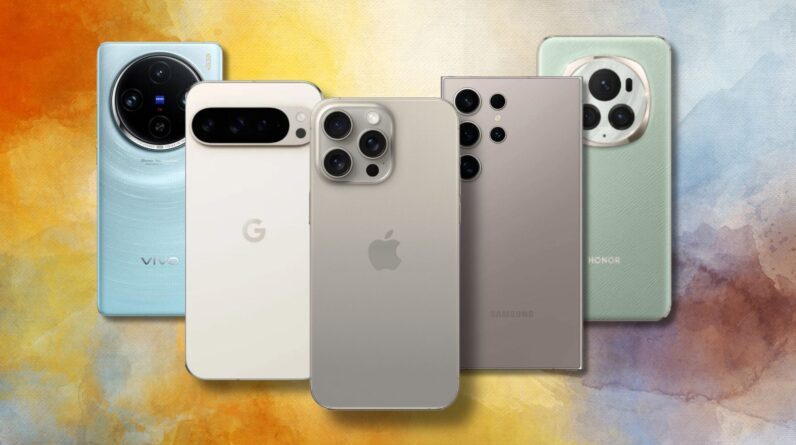
Every smartphone on the market has some kind of camera system, making the task of finding the best camera phone all the more difficult – but that’s where we at Trusted Reviews come in. Our experts have tested smartphone cameras of all shapes and sizes, and here are our absolute favourites available in 2024.
With so many options on the market, deciding which is best for your needs can be overwhelming. But fear not; we’ve tested a range of smartphones and compiled a list of our favourite picks to make your decision easier.
Whether you’re an influencer looking to capture the perfect TikTok or snap everyday moments with friends and family, your smartphone is perfect for the job. With your phone always within reach, it’s easy to snap a photo or record a quick video whenever the opportunity arises. And with the countless editing apps available, you can edit and post your photos and videos without leaving your phone.
While camera phones can’t quite match the capabilities of high-end mirrorless or DSLR cameras, they’ve come a long way in recent years. Many modern smartphones now feature multiple sensors, including ultra-wide, telephoto, periscope and macro lenses, allowing for a more versatile shooting experience. There’s also emerging camera tech like large 1-inch sensors, variable aperture and much more, all to elevate smartphone photography to the next level.
Additionally, advanced camera software allows for features like portrait mode and night mode, making capturing stunning photos in any lighting situation easier than ever.
We at Trusted Reviews take our reviews seriously, examining every aspect of a smartphone, including design, display, specs, battery, and camera. We use each device as our main phone for at least a week, putting them through rigorous lab and real-world tests. We test the camera’s low-light capabilities, portrait mode, and video quality, ensuring we provide you with the most accurate and useful information possible.
So, if you’re in the market for a new camera phone, trust us to guide you towards the best options available.
Scroll down to see all our best camera phones right now, or head over to our best phones guide for a more general overview of the best mobiles on the market.
Best camera phones at a glance
How we test
We review a smartphone’s camera based on our experience with it, not a manufacturer’s claims or boasts. We shoot sample images and video in varying conditions to properly test its skills and we include sample images in our review wherever possible.
If a smartphone has a specific camera setting – a night mode, for example – we’ll test it thoroughly, while always comparing it to what else is on the market.
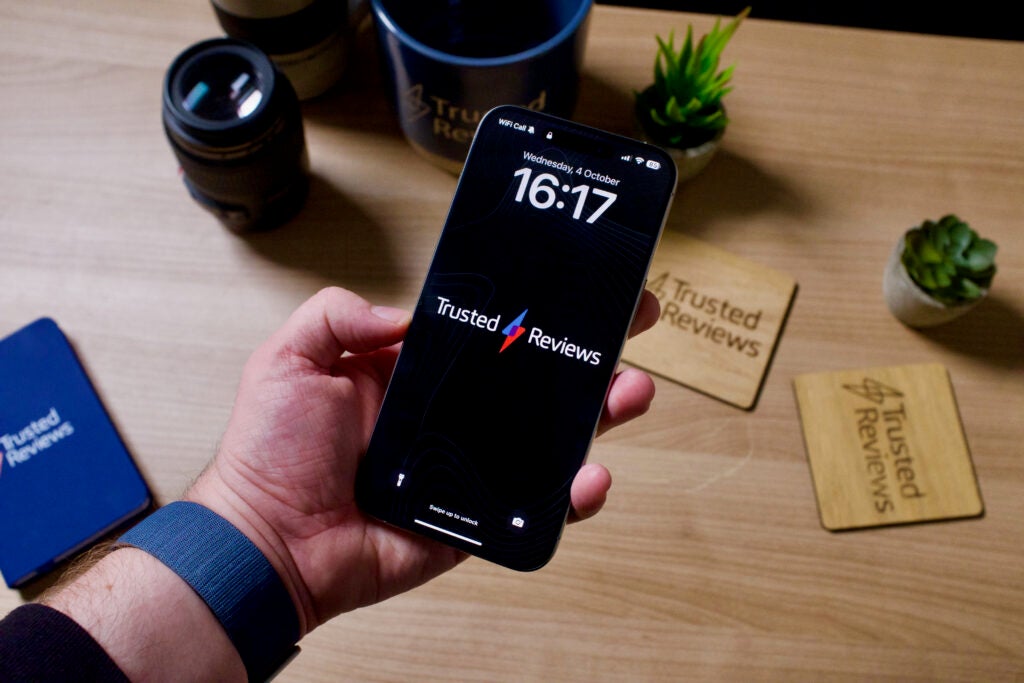
Apple iPhone 15 Pro Max
The best for video
Pros
- It has USB-C (finally)
- 5x zoom is welcome
- Much comfier to hold and use; so much lighter
Cons
- The Action Button is welcome – but it could do more
- No 128GB option means higher price
Taking over the award from the iPhone 14 Pro, the iPhone 15 Pro Max is the best camera phone we’ve tested.
Apple’s latest flagship is reliable in all conditions, captures the best video out of any other phone on this list, and boasts three distinct cameras for versatility, with each capturing different focal lengths.
The zoom skills on the Galaxy S24 Ultra still best those of the iPhone 15 Pro Max, though the zooming skills here are a notable improvement over the outgoing 14 Pro. You don’t get the full 5x zoom on the iPhone 15 Pro, with this reserved for the Max model.
There’s a 48MP main wide camera that bins down images to 24MP, rather than 12MP on the 14 Pro Max, for added detail compared to its predecessor. You can shoot 48MP shots if you want, but this is a separate mode.
When compared to many of the other phones on this list, the shots from the iPhone are a little more realistic and skin tones feel more natural. There’s a dedicated Night Mode for shooting in darker surroundings, and the effects are great, with plenty of detail retained and dark spots kept mostly free of noise.
The excellent results continue when we look at video capture. While it still doesn’t shoot video in the same 8K resolution as the S24 Ultra, the 4K capture we recorded was well-stabilised without looking fake, and packed the same great colour reproduction as the photos. The Cinematic Mode still supports 4K, and Action Mode for upping the stabilisation.
On top of the camera itself, you’ll also be treated to good battery life, a gorgeous display, a well-built titanium body and USB-C – a feature that allows you to plug in SSDs for higher-quality shooting.
Reviewer: Max Parker
Full review: iPhone 15 Pro Max review

Samsung Galaxy S24 Ultra
Best for zooming
Pros
- Genuinely useful AI features
- Versatile camera setup
- All-day battery life and then some
- Seven years of OS upgrades
Cons
- Very expensive
- Average ultrawide camera
While all the cameras of Samsung’s top-end Galaxy S24 Ultra are of note, its zooming prowess remains unmatched by the competition – even without a dedicated 10x periscope like last year’s flagship.
Instead, the S24 Ultra comes with a new high-res 50MP 5x periscope lens that both delivers similar results at the 10x level as well as massively boosting quality between the 5-10x mark, a job previously handled by the fixed 10MP 3x telephoto lens. Regardless of the level of zoom you opt for, the phone manages to capture plenty more detail than the digital zoom from the likes of the iPhone 15 Pro Max and Google Pixel 9 Pro XL, making it a pretty versatile snapper.
There’s also Samsung’s famed 100x space zoom that’s particularly well suited to taking photos of the moon – though admittedly not much else – and a rather standard 12MP ultrawide lens.
The primary 200MP camera remains unchanged compared to the S23 Ultra, but considering the top-end performance on offer, that’s not a huge complaint. Using 16-in-1 pixel binning tech, the phone captures vibrant, detailed shots in both well-lit and low-light environments. It’s almost effortless to capture stunning images with the main sensor.
It’s not just hardware either; the camera app comes with a range of shooting modes including an Expert RAW mode that allows you to capture RAW images at up to 50MP and take long-exposure shots of the night sky. It also takes advantage of new GenAI-powered editing features, allowing you to remove elements of photos, move them around and more, and you can record in up to 8K@30fps too.
Reviewer: Lewis Painter
Full review: Samsung Galaxy S24 Ultra review
Google Pixel 9 Pro XL
Best for stills
Pros
- Redesigned chassis looks way more modern
- Holistic, genuinely helpful approach to AI
- Amazing photo and video capabilities
- All-day battery life
Cons
- Second price hike in two years
- Can get hot when gaming
- Tensor G4 isn’t much more powerful than the G3
If you’re purely wanting a phone camera for stills photography we think the Pixel 9 Pro XL is the one to go for, just like the Pixel 8 Pro before it – and the Pixel 7 Pro before that.
The way Google’s processing utilises HDR to level out contrast and exposure is fantastic, ensuring photos taken on sunny days are unmatched in the mobile space. It’s almost effortless to capture a great-quality image on the Pixel 9 Pro XL.
But it’s more than just a good snapper; the colours captured are way more true to life than the over-saturated competition, and Google’s skin tone reproduction tech remains the best in the industry. This helps give photos snapped on the Pixel 9 Pro XL a rather pro, high-end look, complete with impressive autofocus tech that nails it every single time.
Google’s Night Mode remains strong – though not the quickest to capture – and does a great job at producing bright and detailed images in low light, though not to the point where it’s unnaturally light. As with daylight photography, it captures something more true to life than its rivals.
The zoom skills of this phone’s 48MP, 5x telephoto are better than the iPhone 15 Pro, but can’t quite compare to the S24 Ultra and its 100x digital zoom, instead capping out at 30x. The 48MP ultrawide has had a boost this year, with a new, larger sensor that helps improve the image quality of images taken by the auxiliary lens.
The Pixel 9 Pro XL also impressed our reviewer with its numerous AI tricks, from the photo and camera tricks we know and love to new features like on-device support for Google Gemini, Gemini Live, Pixel Screenshots and Pixel Studio, just to name a few. It also didn’t struggle to deliver all-day battery life, making it a great option overall, not just when it comes to photography.
Reviewer: Lewis Painter
Full review: Pixel 9 Pro XL review
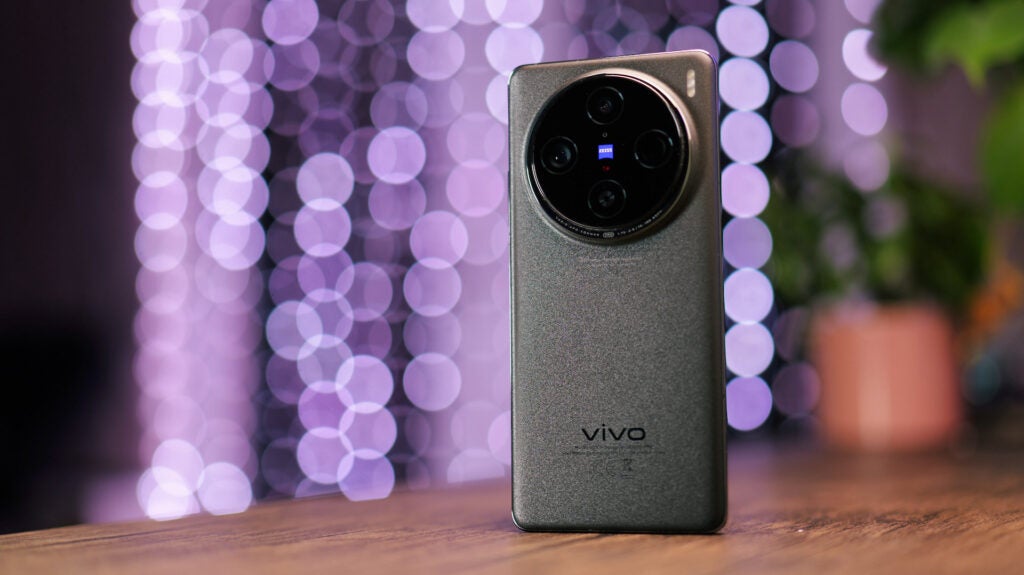
Vivo X100 Pro
Best for low-light photography
Pros
- Impressive main camera with 1-inch sensor
- Brilliant 4.3x telephoto lens
- Speedy performance
- Blazing fast charging speeds
Cons
- The gigantic camera bump will be off-putting for some
- Selfie camera is unexceptional
- Not available in the UK or US
- FunTouch OS isn’t the most exciting skin
If you find yourself snapping a lot of photos in more challenging lighting conditions, such as indoors, at concerts or just on the street at night, you’ll want a phone camera that can handle low-light photography.
This is where the Vivo X100 Pro comes in as our top recommendation for low-light shooting, taking the mantle from the Vivo X90 Pro.
The X100 Pro features the same 1-inch main camera sensor as its predecessor, paired with a 23mm equivalent focal length and an f/1.75 aperture. The main camera is the best of the X100 Pro’s three lenses late at night thanks to its huge sensor. It also features an updated anti-reflective coating for a 50% reduction in reflectivity and improved image clarity.
Alongside the main sensor is a 50-megapixel ultra-wide camera and another 50-megapixel telephoto camera with a 100mm equivalent lens and 4.3x zoom. We were especially impressed with the stability of this floating periscope camera at night and the ultra-wide camera holds its own in darker conditions, too.
There’s also support for 8K/30 recording on the main camera with excellent image stabilisation, though you can’t expect the telephoto lens to be entirely jitter-free even with stabilisation switched on. Turn the smartphone over and you’ll find a 32-megapixel selfie camera.
Other key specs include a sharp 6.78-inch AMOLED screen, MediaTek’s top-end Dimensity 9300 chipset and a large 5400 mAh battery with support for 100W fast charging to get you juiced up quickly.
Reviewer: Luke Baker
Full Review: Vivo X100 Pro review

Google Pixel 8a
The best value camera phone
Pros
- Manageable size
- IP rating and Qi charging
- Great camera (for the price)
- Seven years of software updates
- Clever AI-infused software
Cons
- Screen is far from the best
- The battery will never last more than a day
- Slow charging
Google’s Pixel line has consistently impressed us with its camera performance since we reviewed the first generation Pixel all the way back in 2016, and it’s not just the flagship phones. The much more affordable A-series has produced some of the best value camera phones in recent years and the Pixel 8a lives up to its predecessors.
The phone retains the primary 64MP camera and 13MP ultrawide as the Pixel 7a, but that doesn’t mean it doesn’t take a great picture. It’s powered by the same Google-made Tensor chip, which lets it offer a few Pixel-specific features including Magic Editor, which enables you to use the AI smarts to completely reimagine elements of your photo, from the sky to the background in general, while Best Take allows you to get the best possible group shots.
Night photos shot using the excellent Night Sight mode retain excellent contrast and remain noise-free, while the speed at which photos are captured is much faster than on the Pixel 7a. Regular photos look realistic, featuring neutral, accurate colours and remain blissfully free of the oversharpening we experience on other phones at this price. This earns it a place in this list as our recommended camera phone for buyers looking for the best value option.
Video maxes out at 4K@60fps and once again our reviewer was impressed, noting how the pleasing colours from the photo capture transferred across to video too.
Our reviewer wasn’t just impressed with the phone’s camera skills but with other areas too. There’s a nice 120Hz display, up from 90Hz on the 7a, pleasingly small dimensions and wireless charging. You can’t go wrong with the boosted seven years of OS upgrades on offer either, blowing out much of the competition at any price point.
Reviewer: Max Parker
Full review: Google Pixel 8a review

Sony Xperia 1 VI
Best for pro shooting
Pros
- Epic battery life
- Grippy, lightweight design
- Camera’s telephoto macro mode is brilliant
Cons
- It’s very expensive
- No US availability
- Zoom camera results can be a bit grainy
It wouldn’t be a camera phone chart without an Xperia present, and our top pick of the 2024 bunch is the top-end Sony Xperia 1 VI.
Rather than packing in the most pixel-packed sensor or the largest sensor around, Sony has taken a different approach with its Xperia 1 VI rear camera offering. Much like its predecessor, the main 52MP Exmor T sensor has a unique two-layer transistor within the CMOS that allows for a big improvement to low-light capabilities while still retaining a fairly slimline camera bump.
That’s flanked by a 12MP ultrawide and an upgraded 12MP telephoto lens with an impressive 5.2x optical zoom – ideal for close-ups and portrait photography. The latter also produces impressive macro photos with pro-level elements like an adjustable focus and focus overlays to help you really nail the close-up focus. It’s hands-down the best macro camera you’ll find on any smartphone right now.
Macro photography aside, our reviewer was impressed with the quality of the main lens both in well-lit and low-light environments, with decent colour and detail on offer. While previous Xperia smartphones had a bevvy of Pro-level camera and audio apps, that has been rolled (for the most part) into the main Camera app, providing all the tools you need without switching between apps. It’s certainly more user-friendly than it used to be.
Camera chops aside, the Xperia 1 VI is very much a top-end Sony smartphone with its blocky, angular design, a new shorter, squatter FHD+ display and Snapdragon 8 Gen 3 performance. It’s also pretty solid on the battery front, with our reviewer squeezing an incredible three days out of the phone with light usage.
The catch? All that tech comes at a cost, with the Xperia 1 VI starting at £1,299, making it one of the most expensive phones around right now.
Reviewer: Cam Bunton
Full review: Sony Xperia 1 VI review

Honor Magic 6 Pro
Best for variable aperture
Pros
- Premium, eye-catching design
- Brightest display around at 5000nits
- Impressive camera performance from all lenses
- Snapdragon-powered performance
Cons
- MagicOS 8 is basically an iOS dupe
- MagicPortal is pretty barebones at the moment
- No charger in the box
With a trio of rear-facing cameras including a 50MP main lens, a massive 180MP 2.5x periscope lens and a 50MP ultrawide, plus a mighty 50MP front-facing camera, the Honor Magic 6 Pro truly stands out as an impressive camera phone.
The cameras feature particularly high-end tech which makes shots even more impressive, especially with the variable aperture technology. Starting with the main 50MP sensor, the variable aperture allows the sensor to switch between f/1.4 and f/2.0, depending on what’s being photographed, resulting in close-ups boasting a DSLR-like quality.
This wider aperture also means the main camera excels in low-light conditions, as we found captured night-time scenes were handled well with very little noise, and a good amount of detail to boot.
It’s not just the main lens that shines however. The impressively pixel-packed 180MP 2.5x periscope lens also features a wide f/2.6 aperture alongside a 1/1.49-inch periscope sensor. This combination allows for higher-quality shots with boosted detail and light, from 2.5x up to 10x and beyond, matching the mammoth 100x zoom of the Samsung Galaxy S24 Ultra. In fact we found that the Honor Magic 6 Pro offers way more true-to-life colour tuning than the more pricey Galaxy S24 Ultra.
Rounding out the trio of lenses is the 50MP ultrawide which includes a 122-degree FOV, 1/2.88-inch sensor and f/2.0 aperture. As seen with the other lenses, this high-end tech means the ultrawide is more than capable of delivering shots in most lighting conditions.
It’s not just the trio of rear cameras that perform to a high level either. The 50MP front-facing camera features autofocus tech and an f/2.0 aperture, which results in true-to-life colours and will more than suffice for selfies and video calls.
Reviewer: Lewis Painter
Full review: Honor Magic 6 Pro

Honor 200 Pro
Best for portraits
Pros
- Stunning portrait effects
- Speedy performance
- Bright, vivid display
- Speedy charging
Cons
- The design is a little odd
- Curved edges are prone to accidental swipes
- MagicOS 8.0 is an acquired taste
If you’re looking for a great phone to shoot portraits in particular, you should definitely consider picking up the Honor 200 Pro.
The Honor 200 Pro is Honor’s first Pro phone to enter the European market, standing out thanks to the company’s recent partnership with Parisian portrait studio, Studio Harcourt.
Design-wise, the phone has a unique oval-shaped camera bump and a velvety-felling matte glass back that isn’t dissimilar to the Vivo X100 Pro. The phone has curved edges around its rear and is rated IP65 for dust and water resistance.
The display is a 6.8-inch OLED screen with a 1224 x 2700 resolution and a smooth 120Hz refresh rate. HDR content looks gorgeous, with vibrant colours and great shadow detail, while text is sharp and videos crisp and detailed.
The Honor 200 Pro takes advantage of three cameras – a 50-megapixel main camera, a 12-megapixel ultra-wide angle camera and a 50-megapixel telephoto camera with 2.5x optical zoom. The main and telephoto cameras include three exclusive Studio Harcourt portrait effects, including the impressive black-and-white Harcourt Classic, the warm Harcourt Colour, and the more typical-looking Harcourt Vibrant.
There’s also a 50-megapixel selfie camera on the front, though the Studio Harcourt effects are only supported through the rear cameras.
Moving on to performance, the Honor 200 Pro is powered by Qualcomm’s new Snapdragon 8s Gen 3, a more affordable version of the flagship Snapdragon 8 Gen 3 processor that we found to be plenty quick and snappy.
Finally, the phone packs a large 5200 mAh battery, offering 1.5 to 2 days of use, along with support for 100W fast charging and 66W wireless charging.
Reviewer: Luke Baker
Full Review: Honor 200 Pro
We also considered…
FAQs
Optical zoom is a camera phone feature that allows you to take images of your subject from afar without allowing the quality to suffer as you might see with digital zoom.
Having a telephoto lens on your phone lets you get very close to your subject without reducing the quality of your image.
OIS – or optical image stabilisation – uses a gyroscope to compensate for shake, keeping your videos stable and your images crisp even in low light.
Specs Comparison
UK RRP
USA RRP
EU RRP
CA RRP
AUD RRP
Manufacturer
Screen Size
Storage Capacity
Rear Camera
Front Camera
Video Recording
IP rating
Battery
Wireless charging
Fast Charging
Size (Dimensions)
Weight
ASIN
Operating System
Release Date
First Reviewed Date
Resolution
HDR
Refresh Rate
Ports
Chipset
RAM
Colours
Stated Power
Trusted Reviews test data
You can see all the test data for the smartphones in this list in the below chart.
Geekbench 6 single core
Geekbench 6 multi core
Max brightness
1 hour video playback (Netflix, HDR)
Battery drain 60-min (music streaming online)
Battery drain 60-min (music streaming offline)
30 minute gaming (intensive)
30 minute gaming (light)
1 hour music streaming (online)
1 hour music streaming (offline)
Time from 0-100% charge
Time from 0-50% charge
30-min recharge (included charger)
15-min recharge (included charger)
30-min recharge (no charger included)
15-min recharge (no charger included)
3D Mark – Wild Life
GFXBench – Aztec Ruins
GFXBench – Car Chase

